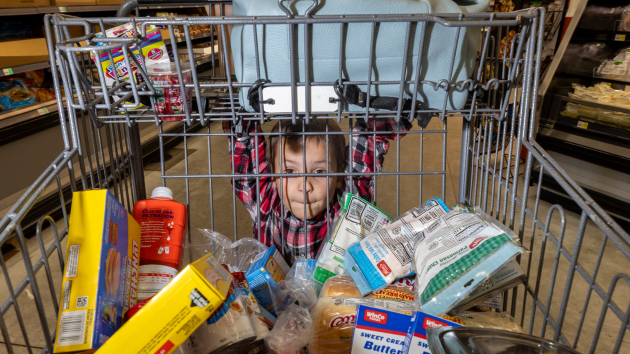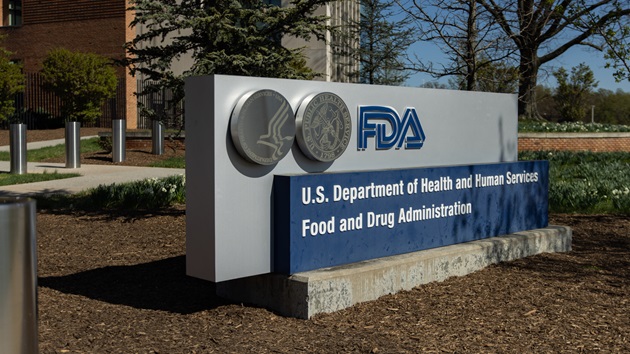Protect kids from getting hit by cars through road safety policy changes, AAP urges
Written by ABC Audio ALL RIGHTS RESERVED on June 20, 2023

(NEW YORK) — On Oct. 8, 2013, 12-year-old Sammy Cohen Eckstein was crossing the street outside his home in New York when a car struck him, tragically ending his life.
“He was crossing the street for soccer practice. That should not be a deadly act. Kids should be able to navigate our streets,” his mother Amy Cohen told ABC News.
Sammy’s death is part of a distressing trend: Child pedestrian deaths in the United States have risen an alarming 11% since 2013, according to the American Academy of Pediatrics.
In response, the AAP is urging communities to adopt policy changes and environmental safety measures to make roads safer and help save lives.
In its first policy statement on pedestrian safety since 2009, the AAP reports that there has been an increase in child pedestrian deaths despite a decrease in overall pedestrian deaths in the past 30 years. The increase in deaths is most prominent among 10 to 14-year-olds and 15 to 19-year-olds.
“The epidemiology of pedestrian safety has taken a turn for the worse. There’s been an urgency to get a statement out,” Dr. Brian D. Johnston, professor of pediatrics at the University of Washington and co-author of the report, told ABC News.
The rise in child pedestrian injury may be in part be because more children are walking to school in response to public health campaigns to promote physical activity and reduce pediatric obesity.
Another reason for the rise in child deaths on the road are smartphones and other technology that can distract both drivers and pedestrians.
“Adolescent pedestrians, when they are walking, they might be listening to music or looking at their phone,” Dr. Sadiqa A. I. Kendi, chief of pediatric emergency medicine at Boston Medical Center and co-author of the policy statement, told ABC News. “The combination of distracted walking and driving has contributed to the increased child deaths over time.”
In 2020, 235 child pedestrians (0-14 years old) died in roadway crashes and 81 died in incidents on driveways or private lots. An additional 245 pedestrian deaths were older teens (15-19 years old).
The United States has one of the highest motor vehicle crash deaths compared to other high-income countries, even after adjusting for population, according to the Centers for Disease Control and Prevention.
The U.S. needs to shift its mindset around road safety, the AAP said in its policy statement. Individual education on road safety is important, but real change comes from policy changes and safer roads.
“Education only goes so far,” Kendi said. “People are people, they are not always going to know what to do.”
The AAP is promoting a policy called “Vision Zero,” which aims to eliminate all traffic fatalities. Vision Zero recognizes traffic injuries as a public health problem due to system failure, and aims to shift efforts away from correcting individual behavior and toward addressing systemic issues like unsafe roadways.
Initiatives include adding curb extensions, roundabouts and speed bumps to roadways in order to reduce car speeds.
Experts say speed is likely the largest risk factor in pedestrian death, with risk increasing dramatically as vehicle speed increases.
“It’s simple, the faster the car goes, the worse the injury,” Dr. Eric Fleegler, associate professor of pediatrics and emergency medicine at Harvard Medical School, told ABC News. “That’s when we see life-threatening injuries.”
Other solutions to help reduce speed include lower speed limits, more automated speed limit enforcement cameras, and narrower roads.
Similar policies were introduced in Sweden in 1997. After their application, pedestrian fatalities were reduced by more than half.
Road safety measures are currently distributed unequally across the U.S. Those inequities are one reason why Black and American Indian pedestrians under 19 years old are almost twice as likely as white children to die in pedestrian events. Hispanic children have 1.2 times the risk of non-Hispanic children.
“Often, lower-income communities have larger arterial roads with multiple lanes and heavy traffic, with less green spaces and crosswalks,” said Kendi.
Lower socioeconomic areas also have “historically poor records of investments in infrastructure,” Johnston said. Targeting these communities with safety measures would likely help immediately with disparities, he noted.
The new guidelines are a wave of hope for families affected by child pedestrian death.
“I am thrilled to hear about this statement. We need systematic policy solutions,” Cohen told ABC News.
The AAP encourages pediatricians and community members to advocate for legislation addressing environmental changes such as street designs prioritizing pedestrian safety. Pediatricians can also join their local AAP chapter to help advocate for change.
“We have a lot of credibility as experts and spokespeople for child health. We can leverage our impact to make change that will actually make pedestrians safer,” Johnston said.
In 2014, Cohen co-founded Families for Safe Streets to help transform her grief into action.
“We started in New York after my son was killed and now we have 20 chapters across the country,” she said.
Joining local groups advocating for road safety is another way to help advocate for change, she said.
Ultimately, these changes are for the protection of all pedestrians.
“The emphasis in the 2023 version of the policy statement is on making walking environments safer for everybody,” Johnston said. “And that is the best way to make child pedestrians safe.”
Copyright © 2023, ABC Audio. All rights reserved.
 KVSP
KVSP 




